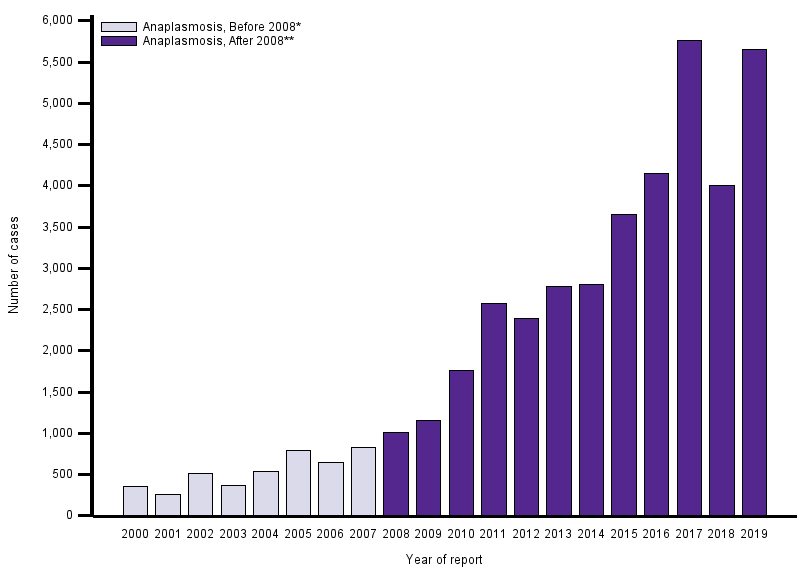Anaplasmosis is a tick-borne illness that is reported across the globe in areas such as North America, Europe, and China.
Known infections in the United States have been on the rise ever since becoming a nationally notifiable disease to the CDC in 2000. Like bartonellosis and Lyme borreliosis, patients with this condition can present with mild to severe non-specific symptoms and diagnosis is often difficult. Visit our webpage that describes the infectious pathogens of the Anaplasma genus and the test options that Galaxy Diagnostics offers.

Anaplasma species are transmitted primarily via bites from Ixodes ticks. The primary infectious agent is Anaplasma phagocytophilum and its primary tick vector in the United States is Ixodes scapularis. According to the European Center for Disease Control and Prevention, the primary vector in Europe is Ixodes ricinus. However, additional Ixodes species have been shown to carry Anaplasma species. These bacteria can be transmitted alone or as a co-infection with other tick-borne pathogens like Babesia and Borrelia species.
When an accidental host becomes infected, Anaplasma species invade and replicate within the white blood (granulocytic) cells traveling through the bloodstream. The resulting non-specific symptoms can vary from mild to severe depending on the age and overall health status of the patient.
How do you know you have it?
Anaplasmosis should be diagnosed by a clinician that considers symptoms, the patient’s clinical history, and substantial laboratory evidence. There are multiple assays that are commonly used for Anaplasma species including serology, microscopy, and polymerase chain reaction (PCR). Serology tests rely on the detection of antibodies, but it can be difficult to determine whether a positive result is indicating past or current infection.
Microscopy of fluid or tissue samples looks for the organism directly using a simple blood-smear or more advanced immunohistochemical (IHC) staining. However, these methods may miss species that are uncommon and have different morphological characteristics.
Galaxy Diagnostics offers highly sensitive PCR testing of blood to confirm active infection of Anaplasma species. Our assay is developed to detect Anaplasma DNA at the genus level and follow-up DNA sequencing identifies the species, if present. This broad approach is useful because it can detect Anaplasma phagocytophilum as well as other species that may cause similar symptoms.
Please click to learn more about anaplasmosis and the tests that Galaxy Diagnostics offers.
Updated June 9th, 2022


